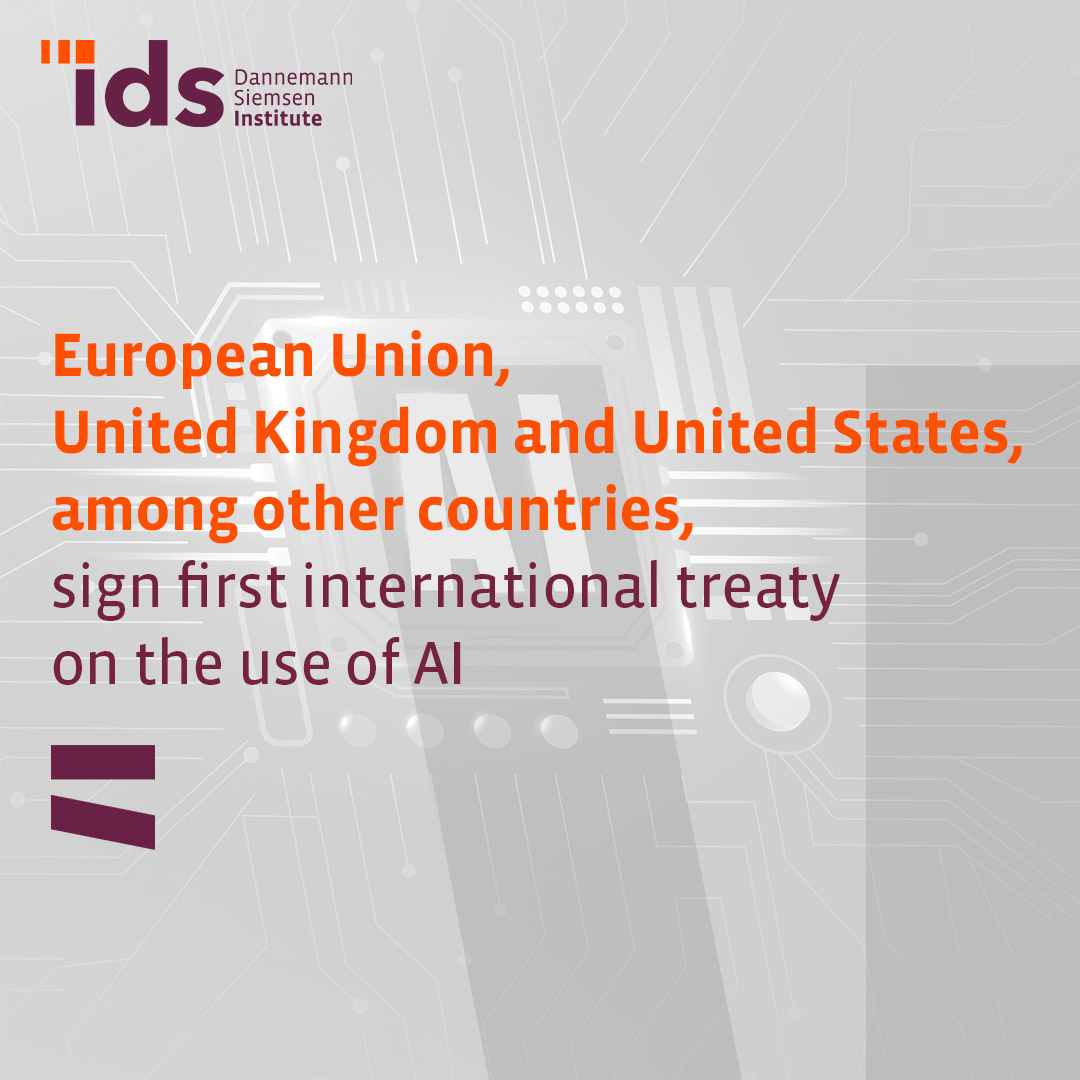12 de setembro de 2024
Share
European Union, United Kingdom and United States, among other countries, sign first international treaty on the use of AI
On 5 September, in the Lithuanian capital Vilnius, representatives of the European Union, the United Kingdom, the United States, Andorra, Georgia, Iceland, Norway, Israel, San Marino and Moldova signed the first international treaty on the use of artificial intelligence (AI). The document, proposed by the Council of Europe, is entitled ‘Convention on Artificial Intelligence and Human Rights, Democracy and the Rule of Law’ and aims to guarantee ‘a legal framework that takes into account the progress and innovation of AI, while managing the risks it may pose to human rights, democracy and the rule of law’.
To begin with, the treaty defines an AI system as “a machine-based system that, for explicit or implicit purposes, infers, from the input it receives, how to generate results, such as predictions, content, recommendations or decisions that can influence physical or virtual environments”. Also, when outlining its scope of action, the document defines some obligations imposed on its signatories, among them: each party must apply the convention to AI activities carried out by public authorities or private agents acting on their behalf; and the parties must deal with the risks and impacts arising from any other AI activities by private agents in accordance with the treaty. However, signatories are exempted from the obligation to apply the provisions of the agreement in cases involving protection of their national security interests, as well as in research and development activities concerning AI systems not yet made available.
The second chapter focuses on obligations involving the protection of human rights, democratic processes and the rule of law. Here, the convention states that signatory parties must adopt and maintain measures to ensure that AI activities are compatible with human rights protection obligations under international and domestic law. Members must also ensure that AI systems are not used to undermine the integrity, independence and effectiveness of democratic institutions and processes, such as the principle of separation of powers, respect for judicial independence and access to justice, as well as protecting fair access and the participation of individuals in public debate and their ability to form opinions freely.
Next, the document establishes general principles related to the activities of AI systems to be followed by its signatories. At this point, it is worth highlighting the provisions that entail, within the scope of AI: respect for human dignity and individual autonomy; compliance with adequate transparency and supervision requirements; responsibility for negative impacts on human rights resulting from activities involving AI; the adoption of measures to guarantee respect for equity, as well as prohibiting discrimination; overcoming social inequalities; protecting privacy and personal data; guaranteeing the reliability of AI systems and promoting safe innovation.
The next chapter deals with the adoption of measures to provide accessible and effective remedies, in accordance with each legal system, in the event of human rights violations resulting from AI systems. In this sense, the suggested procedure determines the provision of sufficient information by authorized bodies to those affected, so that these victims can use it when submitting a complaint to the competent authorities. The convention also emphasizes the need for transparency on the part of AI systems that could have a significant impact on human rights and procedural guarantees, so that users are always notified that an AI is involved.
Another important topic is the follow-up mechanisms and co-operation between the signatories. In this sense, the document defines the so-called ‘conference of the parties’ as a form of compulsory meeting with a view to identifying problems, resolving disputes, providing information or supplementing the convention. Thus, in the event of a dispute between the parties over the interpretation or application of the treaty, they will be able to resolve it through negotiations or any other peaceful means of their choice.
Finally, the implementation of the convention’s provisions must be carried out in compliance with the principle of non-discrimination, respecting the rights of people with disabilities and children, encouraging and promoting digital learning for the population and protecting existing human rights. In addition, its provisions should not be interpreted in a restrictive way and accession to them should be considered through public discussions and consultations with interested parties. The treaty will enter into force on the first day of the month following the expiry of a period of three months after the date on which five signatories, including at least three member states of the Council of Europe, have ratified it.
The treaty can be accessed via the link: Framework Convention on Artificial Intelligence and Human Rights, Democracy and the Rule of Law
Note: For quick release, this English version is provided by automated translation without human review.
